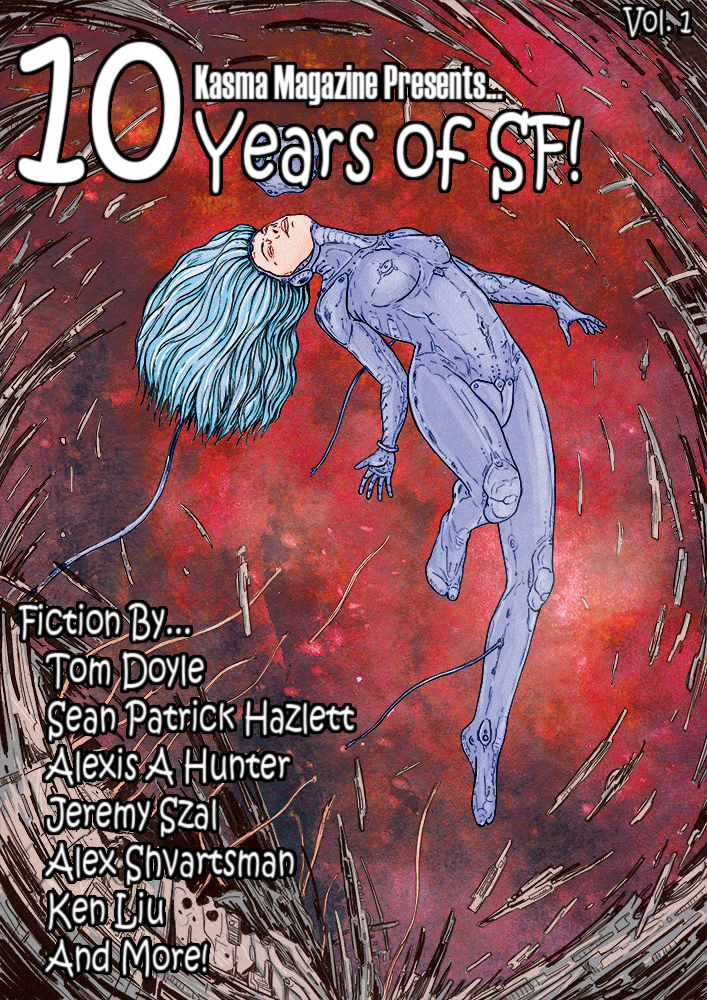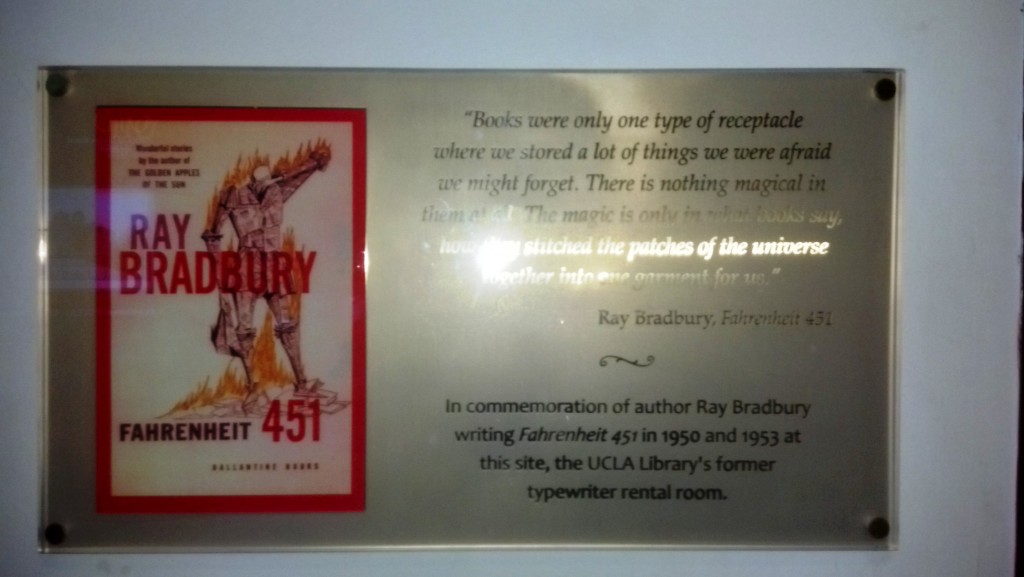(1) A DAY OBSERVED. At Book View Café, Diana Pharoah Francis marks the U.S. holiday: “Memorial Day”.
Today is the day we remember and honor those who’ve served in the military and those who continue to serve. Those who died in service to their country, and those who gave up more than any of us can possible know, even though they kept their lives.
This is the day we say thank you, paltry though that is. For me, it’s also the day to remember those who’ve fallen in service to others in all capacities. You give me hope.
(2) PLUS ÇA CHIANG. Ted Chiang authored “An Op-Ed From The Future” for the New York Times: “It’s 2059, and the Rich Kids Are Still Winning”. An editor’s note explains, “This is the first installment in a new series, “Op-Eds From the Future,” in which science fiction authors, futurists, philosophers and scientists write op-eds that they imagine we might read 10, 20 or even 100 years in the future…”
…We are indeed witnessing the creation of a caste system, not one based on biological differences in ability, but one that uses biology as a justification to solidify existing class distinctions. It is imperative that we put an end to this, but doing so will take more than free genetic enhancements supplied by a philanthropic foundation. It will require us to address structural inequalities in every aspect of our society, from housing to education to jobs. We won’t solve this by trying to improve people; we’ll only solve it by trying to improve the way we treat people….
(3) GAME OF FORKS. “4000 misplaced forks and knives became a cutlery throne” – translated from Swedish by Hampus Eckerman:
About 300 forks, knives and spoons are separated each day from the food remains of the Uppsala populace, by their local biogas plant. In order to, in a fun way, show how important it is to sort properly, Uppsala water has built a magnificent cutlery throne.
– We believe that the majority of cutlery comes from catering establishments and schools where cutlery is easier to get lost among leftovers. But we do not know for sure, says Jasmine Eklund, Communicator at Uppsala Water.
The cutlery throne consists of about 4,000 pieces of cutlery which corresponds to two weeks of cleaning. The cutlery has been washed and then welded together.
– We do not think that people have thrown the cutlery among the leftovers on purpose. Therefore, we hope that the throne will make people more aware of what they throw out and how they sort, says Jasmine Eklund.
“Great fun that people want to come here”
Until easter Thursday, anyone who wants to visit the Pumphouse in Uppsala can sample the huge glittering throne.
– We have had many visitors this weekend, and hope for more during the Easter week. It is great fun that people want to come here and learn more about our work, says Jasmine Eklund.
On Monday morning, Vilgot Sahlholm, 11 years old, visited Pumphouse with his brother, grandmother and grandfather.
– I think the throne was pretty hard, so it wasn’t so comfy to sit in, he says.
Cutlery Throne
Weight: 120 kg.
Number of cutlery: About 4000 pieces.
So much cutlery is sorted out each year: 3,5 tons, which means around 100 000 pieces.
(4) LANGUAGE BUILDING. Rowan Williams, the former archbishop of Canterbury, weighs in with “A Lesson for (and From) a Dystopian World” in the New York Times.
…Throughout his life, the American writer Russell Hoban produced a number of startlingly original novels. Perhaps the most startling of them all is “Riddley Walker,” first published in 1980. (Hoban died in 2011.) The book belongs to the dystopian genre that has become fairly popular in recent decades. What makes it unlike any other is its language — a version of English as it might be spoken by people who had never seen words or place names written down, an idiom among the ruins of half-remembered scientific jargon, folklore and garbled history. In the post-apocalyptic universe created by Hoban, words create ripples of meaning, echoes reaching into the heart of language and thought through a thick fog of cultural trauma and loss…
(5) DOES ANYONE READ THIS STUFF? Ersatz Culture has produced an ambitious set of “Charts showing SF&F award finalists and their rating counts on Goodreads”:
First off, I want to make it absolutely clear that there’s no agenda here about how awards should reflect popularity, or that awards that don’t meet someone’s personal perception of what is “popular” are bad/fixed/etc, or any similar nonsense. (Although I am more than happy to point out cases where claims of representing popular opinion aren’t backed up by the statistics.)
Award pages
(6) CLARKE AWARD. On Five Books, Cal Flyn interviews Arthur C. Clarke Award director Tom Hunter, who explains why the six Clarke nominees are worth reading.
Categorisation was something I wanted to touch on. Looking at the list of your previous finalists, I was interested to see books that I wouldn’t initially have considered to be sci fi. For example: Colson Whitehead’s The Underground Railroad, which won in 2017. So I wonder if you might say a bit more about the definition of ‘science fiction’ and what you consider it to encompass.
Yes. Going right back to the beginning, to the award’s creation: one of Arthur’s stipulations was that it wasn’t to be an award for the best book-that-was-a-bit-like-an-Arthur-C-Clarke-book. He wanted it to be very broad in its definition. And science fiction is a phenomenally hard thing to define anyway. It’s one of those things, like: I know it when I see it. And it changes – going back to my previous point about how publishing’s view has changed.
(7) CLOSURE FOR D&D TV SERIES. Fans of the ‘80s Dungeons & Dragons TV series know that the series never truly ended. Well, Renault Brasil has decided to wrap things up in their new and rather impressive commercial for the KWID Outsider. Series creator Mark Evanier has given his blessing.
…Someone also usually writes to ask if there was ever a “last” episode where the kids escaped the D&D world and got back to their own…and occasionally, someone writes to swear they saw such an episode on CBS. No, no such episode was ever produced. One of the writers on the series later wrote a script for such an episode but it was not produced until years later as a fan-funded venture. I do not endorse it and I wish they hadn’t done that…but if you like it, fine.
The show is still fondly remembered and is rerun a lot in some countries. It’s popular enough in Brazil that the folks who sell Renault automobiles down there spent a lot of money to make this commercial with actors (and CGI) bringing the animated characters to life.
(8) WOULD HAVE BEEN 85. Adam Dodd of the Cleveland News-Herald is “Remembering Harlan Ellison: local writer and professional troublemaker”.
“I see myself as a combination of Zorro and Jiminy Cricket,” wrote Ellison, describing himself while writing the introduction to Stephen King’s ‘Danse Macabre.’ “My stories go out from here and raise hell. From time to time some denigrater or critic with umbrage will say of my work, ‘He only wrote that to shock.’ I smile and nod. Precisely.”
Ellison’s prickly attitude was typified by the manner in which he left Ohio State University in 1953 after only attending for 18 months. After a writing professor questioned his ability to craft a compelling story Ellison physically attacked him and was subsequently expelled.
(9) THORNE OBIT. Doctor Who News reports the death of Stephen Thorne (1935-2019) at the age of 84.
In the 1970s Stephen Thorne created three of the greatest adversaries of the Doctor, characters whose influence endures in the programme today.
His towering presence and deep melodious voice were first witnessed in the 1971 story The Dæmons, where he portrayed Azal, the last living Dæmon on Earth, in a story often cited as one of the most appreciated of the third Doctor’s era and story emblematic of the close-knit UNIT team of the time.
He returned to the series in 1972 playing Omega, the renegade Time Lord fighting The Three Doctors, a character that would return to confront the Doctor in later years. In 1976 he opposed the Fourth Doctor playing the male form of Eldred, last of the Kastrians in the story The Hand of Fear.
(10) TODAY’S BIRTHDAYS.
[Compiled by Cat Eldridge.]
- Born May 27, 1894 — Dashiell Hammett. No, the author of The Maltese Falcon did not write anything of a genre nature but he did edit early on Creeps by Night: Chills and Thrills. I note there are stories by H. P. Lovecraft and Frank Belknap Long among a lot of writers of writers less well known as genre writers. (Died 1961.)
- Born May 27, 1911 — Vincent Price. OK, what’s popping into my head is him on The Muppets in the House of Horrors sketch they did. If I had to single out his best work, it’d be in such films as House on Haunted Hill, House of Usher and The Pit and the Pendulum. Yes, I know the latter two are Roger Corman productions. He also did a lot of series work including being Egghead on Batman, appearing in the Fifties Science Fiction Theater, a recurring role as Jason Winters on the Time Expressand so forth. (Died 1993.)
- Born May 27, 1922 — Christopher Lee. He first became famous for his role as Count Dracula in a series of Hammer Horror films. His other film roles include The Creature in The Curse of Frankenstein, Sherlock Holmes in Sherlock Holmes and the Deadly Necklace, Kharis the Mummy in The Mummy, Francisco Scaramanga in The Man with the Golden Gun, Lord Summerisle In The Wicker Man, Saruman in The Lord of the Rings films and The Hobbit film trilogy, and Count Dooku in the second and third films of the Star Wars prequel trilogy. (Died 2015.)
- Born May 27, 1935 — Lee Meriwether, 84. Catwoman on Batman. (And if you have to ask which Batman, you’re in the wrong conversation.) Also, she had a turn as a rather sexy Lily Munster on The Munsters Today. And of course she had a co-starring role as Dr. Ann MacGregor on The Time Tunnel as well. And yes, I know I’m not touching upon her many other genre roles including her Trek appearance as I know you will.
- Born May 27, 1934 — Harlan Ellison. Setting aside the “The City on the Edge of Forever” episode”, I think I best remember him for the Dangerous Vision anthologies which were amazing reading. (Died 2018.)
- Born May 27, 1958 — Linnea Quigley, 61. Best know as a B-actress due to her frequent appearances in low-budget horror films during the 1980s and 1990s. Most of them no one remembers but she did play a punk named Trash in The Return of the Living Dead which is decidedly several steps up from Sorority Babes in the Slimeball Bowl-O-Rama. She’s currently Joanie in the 86 Zombies series which streams pretty much everywhere.
- Born May 27, 1966 — Nina Allan, 53. Author of two novels to date, both in the last five years, The Race and The Rift which won a BSFA Award. She has done a lot of short stories hence these collections to date, A Thread of Truth, The Silver Wind: Four Stories of Time Disrupted, Microcosmos, Stardust: The Ruby Castle Stories and Spin which has also won a BSFA Award. Partner of Christopher Priest.
- Born May 27, 1967 — Eddie McClintock, 52. Best known no doubt as Secret Service agent Pete Lattimer on Warehouse 13, a series I love even when it wasn’t terribly well-written. He’s also in Warehouse 13: Of Monsters and Men which is listed separately and has the plot of ‘the Warehouse 13 operatives uncover a mysterious comic book artifact and must work together to free themselves from its power.’ He’s had one-off appearances in Witches of East End, Agents of S.H.I.E.L.D. and Supergirl, but no other major genre roles to date.
(11) HOME ON THE PULP RANGE. At Galactic Journey, Gideon Marcus tells why some big names are returning to genre (in 1964): [May 26, 1964] Stag Party (Silverberg’s Regan’s Planet and Time of the Great Freeze).
…A lot of authors left the genre to try their luck in the mainstream world. That’s why we lost Bob Sheckley, Ted Sturgeon, and Philip K. Dick for a while. But times are tough in the real world, too. Plus, of late, sff seems to be picking up again: IF is going monthly, we’ve got a couple of new mags in Worlds of Tomorrow and Gamma, books are coming out at an increasing rate. And so Dick is back in force, and others who have left the field are nosing their way back in….
Robert Silverberg is another one of the authors who wrote sff like the dickens back in the ’50s and then disappeared. He’s still writing and writing and writing, but most of his stuff doesn’t end up on our favorite shelves or in our favorite magazines.
But sometimes…
(12) THINK WESTEROSILY, ACT LOCALLY. In “Name of Thrones: Why Baltimore-Area Parents Are Naming Their Kids After Characters From the HBO Series”, the Baltimore Sun’s John-John Williams IV reports that a lot of babies in the Baltimore area have become named Arya, Emilia, Khaleesi, Maisie, Meera, and Daenerys because their parents love Game of Thrones.
…Kucharski said she wanted to name her daughter after another strong female. (Arya’s twin is named after Maya Angelou.) The character Arya Stark stood out to Kucharski because of the heroine’s strong-willed nature and the fact that she doesn’t take no for an answer.
“She was able to carve her own way,” Kucharski said…
(13) A STORY OF OUR TIMES. No idea if this is true. Have a tissue ready: “Valar Morghulis”.
Footnote – translation of “Valar Morghulis”.
(14) WHAT IS LIFE FOR. Joseph Hurtgen reviews “Holy Fire – Bruce Sterling” at Rapid Tramsmissions.
…By the way, Sterling is a master of juxtaposing the brightness of futurity with dark pessimism. And for presenting the wonder of the future and then darkening and wrecking that vision, Holy Fire might be Sterling’s apotheosis. Sterling’s analysis of the future in this novel is ahead of the curve in the spheres of tech, psychology, human culture, and art. The novel takes place in 2090, a hundred years from when he wrote it, and going on 25 years later, it still reads as if it occurs in a future several decades out. But the real beauty of the work is the pessimism about what some of the early attempts at radical life extension could look like–namely, lost souls, people shadows of their former selves living a second youth, this time more reckless because they’ve already lived a century of making good decisions, so why not?
(15) SPACE OPERA COMPANY. Paul Weimer weighs in about “Microreview [book]: The Undefeated, by Una McCormack” at Nerds of a Feather.
There are many ways to tell a Space Opera story. Big space battles with fleets of ships using their silicon ray weapons to destroy the enemy. Or perhaps a story of diplomatic intrigue, where the main character journeys to the heart of an Empire , using words as a weapon to direct, and divert the fate of worlds. Or even have an Opera company tour a bunch of worlds in a spacecraft of their own.
Una McCormack’s The Undefeated goes for a subtler, more oblique approach, by using the life story of a famous, award winning journalist, Monica Greatorex,, whose journey back to her home planet braids with not only the story of her planet’s annexation into the Commonwealth, but of the enemy who seeks in turn to overthrow that Commonwealth.
(16) BREW REVIVAL. The brew that made Macchu Picchu famous: “Beer Archaeologists Are Reviving Ancient Ales — With Some Strange Results”.
The closest that Travis Rupp came to getting fired from Avery Brewing Co. in Boulder, Colo., he says, was the time he tried to make chicha. The recipe for the Peruvian corn-based beer, cobbled together from bits of pre-Incan archaeological evidence, called for chewed corn partially fermented in spit. So, Rupp’s first task had been to persuade his colleagues to gather round a bucket and offer up their chompers for the cause.
Once he got to brewing, the corn-quinoa-spit mixture gelatinized in a stainless steel tank, creating a dense blob equivalent in volume and texture to about seven bathtubs of polenta. Oops.
In another go, Rupp managed to avoid the brew’s gelatinous fate, but encountered a new problem when it came time to drain the tank. “It literally turned into cement in the pipes because the corn was so finely ground,” says Rupp. “People were a little cranky.”
These are the kinds of sticky situations that come with trying to bring ancient flavors into modern times.
A self-proclaimed beer archaeologist, Rupp has traveled the world in search of clues as to how ancient civilizations made and consumed beer. With Avery Brewing Co., he has concocted eight of them in a series called “Ales of Antiquity.” The brews are served in Avery’s restaurant and tasting room.
(17) TALL TERROR. BBC profiles “Javier Botet: Meet the actor behind Hollywood’s monsters”.
On first glance, you probably wouldn’t recognise Javier Botet.
Though not a household name, the Spaniard has a portfolio that many in the movie business would kill for.
Over the last few years, the 6ft 6in actor has starred in some of Hollywood’s biggest horror and fantasy productions.
From It to Mama to Slender Man – with a Game of Thrones cameo along the way – Javier has forged a reputation as one of the best creature actors in the industry.
…At one point, he went along to a special effects workshop. Both he and the tutor suggested his frame would be perfect to try out monster make-up on.
“I didn’t realise but I was born to perform,” Javier says.
(18) HOW’S THAT BEARD COMING ALONG? Norse Tradesman would be delighted to sell you the Viking Rune Beard Bead Set (24) – Norse Rings for Hair, Dreads & Beards.

(19) IT’S NOT THE REASON YOU THINK. Advice some of you globetrotters may be able to use: “Why You Should Fly With Toilet Paper, According to the World’s Most Traveled Man”.
And when I speak to people, I always put a roll of toilet paper on the podium and let them wonder about it till the end of my lecture. I’m given maybe five to 10 bottles of wine when I travel, so how do you pack wine so it doesn’t break? You put a toilet roll around the neck, because that’s where the bottle is going to break. I’ve never had one break.
(20) SINGULARITY SENSATION. Certifiably Ingame is here to help Trek fans with the question “Fluidic Space: What is it?”
Everything you need to know (but mostly stuff you didn’t) about about the home of Species 8472, the realm of Fluidic Space. This video is mostly theory-crafting about what exactly Fluidic space is as shown in Star Trek as there are no defined answers, but like most Science Fiction, it has may have a basis in reality. Or realities in this case. The laws of physics seem the same, as seen by crossing over, but the USS Voyager also get there by flying into a singularity made by gravitons because its Star Trek.
[Thanks to JJ, Chip Hitchcock, Carl Slaughter, Andrew Porter, Rob Thornton, Mike Kennedy Martin Morse Wooster, Cat Eldridge, Bonnie McDaniel, and John King Tarpinian for some of these stories. Title credit goes to File 770 contributing editor of the day Daniel Dern.]












